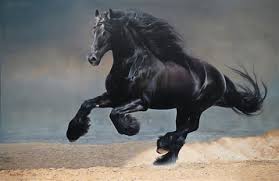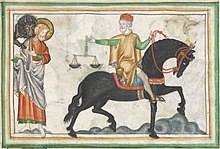 My last post discussed the fact that Effigy of the Cloven Hoof was set in 1400, a time when the language spoken in England was Middle English. The English language has evolved over the past 600 years to what we speak today. Although I do not attempt to write in Middle English, there are terms which I use in my stories which are either unknown today or have meanings unfamiliar to the modern reader. This can create a problem, so each of my books contains a glossary explaining their meanings in the 14th century.
My last post discussed the fact that Effigy of the Cloven Hoof was set in 1400, a time when the language spoken in England was Middle English. The English language has evolved over the past 600 years to what we speak today. Although I do not attempt to write in Middle English, there are terms which I use in my stories which are either unknown today or have meanings unfamiliar to the modern reader. This can create a problem, so each of my books contains a glossary explaining their meanings in the 14th century.
I have selected some of the glossary words from Effigy of the Cloven Hoof to give you a sample of definitions which may not be familiar. It is my hope that the words in the glossary help my readers get into the time and place of my stories.
Early in the book, I use the word “affinity”. It is defined in the glossary as “the medieval concept of a loyal household, of individuals who wore the livery or heraldic badge of one’s lord and gave full allegiance and acceptance of his rule.”
Brother William, Lady Apollonia’s almoner, appears in my first book and is an important character throughout the series. “Almoner” is defined in the glossary as “a person whose function is to manage the distribution of alms in behalf of a noble person.”
Many modern readers may not be familiar with the term “Effigy” used in the title of my first book. The glossary defines “effigy” as an “image sculpted on a tomb.” The title also includes the phrase, “Cloven Hoof.” This is defined as “a symbol of or the figurative indication of Satan’s evil temptation.”
One of the most puzzling terms I use for modern readers is “courtesy”. The glossary defines it as follows: “In the understanding of those followers of Julian of Norwich from about 1400, “courtesy” is not meant to be understood as good manners or polite behavior. Courtesy means loving respect for one another, implying not only indulgence of another but goodness granted freely regardless of another’s sinful behavior. Mother Julian describes God as our ‘Courteous Lord.’”
 Horses were an important means of transportation in my stories. The large warhorses used by knights are defined as “destriers” in the glossary. A destrier is represented in the picture shown at the top. A “palfrey”, such as ridden by the Lady Apollonia, is defined as a saddle horse, not a war horse, and is pictured on the left in a medieval drawing.
Horses were an important means of transportation in my stories. The large warhorses used by knights are defined as “destriers” in the glossary. A destrier is represented in the picture shown at the top. A “palfrey”, such as ridden by the Lady Apollonia, is defined as a saddle horse, not a war horse, and is pictured on the left in a medieval drawing.
Some readers ask what the term “garderobe” might mean. It was a “medieval privy often built into the walls of a castle or manor house.”
“Liege” may not be familiar to modern readers. It refers to a “feudal vassal who grants service or allegiance to a feudal lord.”
Throughout my books I have written about Lady Apollonia attending “Opus Dei” services when visiting monasteries. This Latin phrase is defined in the glossary as “literally the ‘work of God’ but refers specifically to the daily services for the divine offices of the church.”
An interesting item of men’s’ apparel in the 14th century was a pair of “poulaines”, mentioned in Effigy of the Cloven Hoof. These were fashionable “14th century shoes for men with excessively long, pointed toes that sometimes had to have the long toes tied round the calf to enable the wearer to walk.”
Often, I write of Lady Apollonia going to her “Prie-dieu” to pray. This is a “piece of furniture in her private chamber designed for kneeling upon during personal prayer.”
Lady Apollonia’s second husband, Edward, is called “Squire” Edward. “Squire”, refers to “a country gentleman, especially the chief landed proprietor in a district, very wealthy but not a member of the nobility.”
“Steward” Giles Digby plays a major role in Lady Apollonia’s affinity. The steward of her affinity is defined as “one who serves as “manager of financial and business affairs…”
I sometimes refer to a “villein” which some readers confuse with villain. The former refers to “a member of the class of partially free persons in a feudal system who served their lord but had some rights and privileges.”
I hope this sample of words from the glossary of Effigy of the Cloven Hoof has been of interest to you. These words are a few illustrations of medieval terminology differing from modern English.